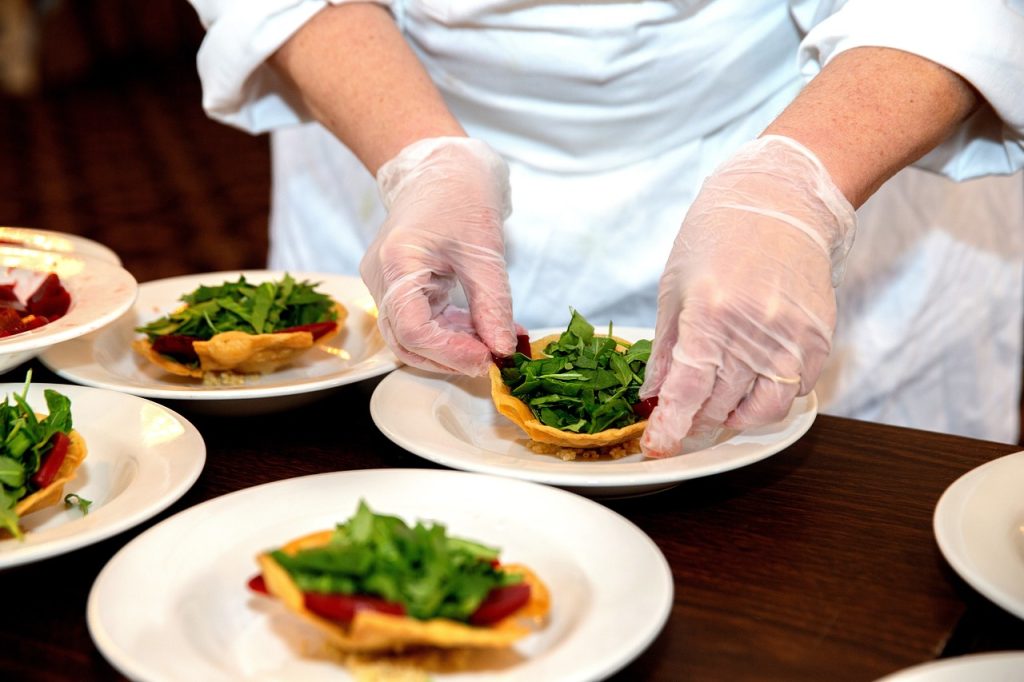All fields are required
Posted in E. coli,Our Blog on November 3, 2024

How common are E. coli outbreaks caused by sick food workers in the United States?
When sick food workers report to work, the risk of spreading foodborne illness increases. As more and more reports of food poisoning associated with restaurant outbreaks hits the news, this is a good time to dive into this topic.
A study published in the Centers for Disease Control and Prevention (CDC) Morbidity and Mortality Weekly Report (MMWR) assessed foodborne illness outbreaks at retail food establishments.
Why?
Foodborne illness associated with restaurants are a public health problem.
According to the agency, “each year, state and local public health departments report hundreds of foodborne illness outbreaks associated with retail food establishments.” Places like restaurants, caterers, and other food service providers.
There are about 265,000 Shiga toxin-producing E. coli (STEC) infections in the United States each year. This serious germ is the most common cause of E. coli outbreaks and serious E. coli illness in the United States. As the study correlates, most of these outbreaks are likely caused by contamination from infectious food workers.
The organization wanted to understand what is causing people to get sick and what factors contribute to these foodborne outbreaks.
Information on how common E. coli outbreaks caused by sick food workers impact the public can be found in the study called Foodborne Illness Outbreaks at Retail Food Establishments – National Environmental Assessment Reporting System, 25 State and Local Health Departments, 2017 – 2019.
According to the report, health departments reported 5,760 foodborne illness outbreaks between 2017 and 2019.
A significant number of theses outbreaks could be traced back to retail food establishments.
For the purposes of this study, a retail food establishment is defined as “operations that store, prepare, package, serve, or vend food directly to the consumer or otherwise provide food for human consumption.”
During the three-year evaluation period, 875 retail food establishments in the included 25 state and local health department jurisdictions contributed to 800 foodborne illness outbreaks.
Norovirus and Salmonella made up most of those outbreak pathogens at 47.0% and 18.6% respectively.
Contamination was the leading cause of the foodborne outbreaks examined during the study period.
Top Five Contributing Factors:
Are you seeing what I’m seeing?
Investigators saw it too!
Contamination by food workers suspected to have an infectious illness keeps coming up. “Approximately 40% of outbreaks with identified contributing factors had at least one reported factor associated with food contamination by an ill or infectious food worker.”
How does this happen?
As part of the study, 725 managers were interviewed to understand how these outbreaks happen and why E. coli outbreaks caused by sick food workers occur in the United States.
It often comes down to policies.
While most (97.7%) of the managers interviewed indicated that their establishment had a policy that required sick food workers to notify their manager when they are ill, only 66% of those had written policies.
But what qualifies as “sick?”
If left ambiguous, a food worker may not understand what illnesses to report. Sadly, only 23% of food establishment managers interviewed in the study said that their policy actually listed all five illness symptoms that required reporting.
Reported symptoms include those that could be related to infectious illness. Vomiting, diarrhea, jaundice, sore throat with fever, and lesion with pus should be included.
Only 16.1% of establishments with outbreaks that were included in the study had a complete plan.
A complete plan includes:
The plan should be written, explained to all food workers, and food managers should be sure that all employees understand the plan.
E. coli is a type of bacteria. But not all of them are bad. In fact, many strains are a normal part of the gut flora in humans and animals.
However, some cause serious illness. Namely, those that produce that Shiga toxin we alluded to earlier in the E. coli illness stats.
People become sick when the eat or drink something contaminated with the bacteria or touch something contaminated with it and put their hands in their mouth or eat.
Anyone can become sick if exposed to E. coli. However, some people may be more likely to become sick if exposed and experience more serious illness or complications if infected.
These include:
In some cases, E. coli infections may lead to a type of kidney failure known as hemolytic uremic syndrome. This happens when the bacteria break down blood cells, causing the filtering aspects of the kidney to clog. This can lead to permanent health problems or even death.
Those with HUS require hospitalization.
Most people sick with E. coli infections will experience diarrhea that can be bloody or watery and stomach cramps. Some people may experience vomiting or a low fever.
Call your doctor if you experience:
If you have been impacted by E. coli outbreaks caused by sick food workers, you may have questions. The Lange Law Firm, PLLC can help!
Dealing with foodborne illness can be difficult. Complications from burdens like lost work, medical bills, and other factors add up. The Lange Law Firm, PLLC has an E. coli lawyer that has helped families with situations just like yours recover millions of dollars and help hold those responsible for negligence accountable for their role in foodborne illness.
Call (833) 330-3663 or fill out the online submission form for a free, no obligation consultation to go over the details of your situation.
By: Heather Van Tassell (contributing writer, non-lawyer)